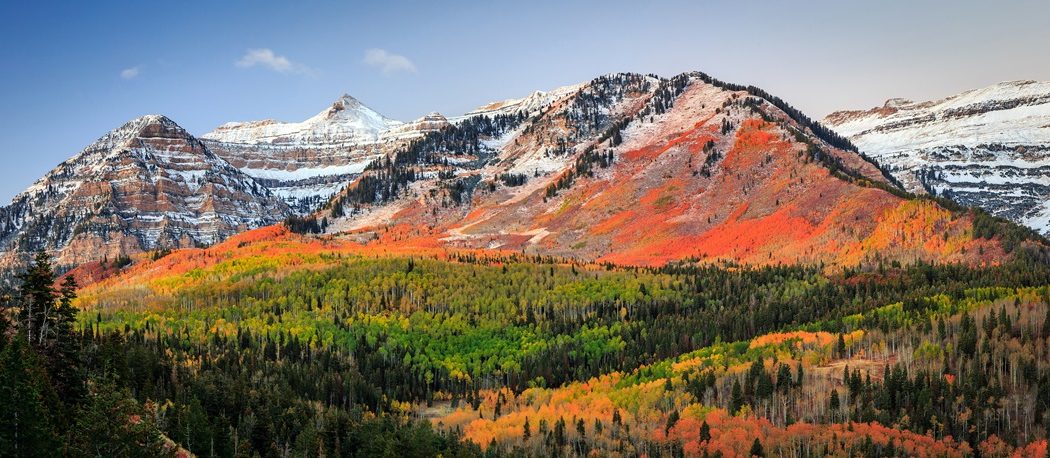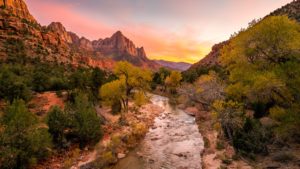The state of Utah has one the best statewide watershed and ecosystem regeneration programs, called the Watershed Restoration Initiative (WRI), which is coordinated by the Utah Department of Natural Resources (DNR). They have just announced $36 million in funding for 121 wildland restoration and rehabilitation projects statewide, with a goal of improving over 173,000 acres of land. In addition, 24 livestock and wildlife water development projects were also funded. All of the projects are scheduled for the 2020 fiscal year.
WRI projects restore damaged watersheds, improve water quality and yield, reduce catastrophic wildfires, restore watershed functions following wildfire, and increase habitat for wildlife populations and forage for sustainable agriculture.
“The success of WRI is made possible because of our many partners and our collective commitment to improving high priority watersheds throughout Utah,” said Tyler Thompson, DNR watershed program director. “Healthy watersheds are vital to Utah’s effort to proactively manage the state’s natural resources, including prevention of catastrophic wildfire, improved habitat for wildlife and the increased yield and quality of water.”
The $36 million in funding comes from a variety of state, federal and private sources, including the Utah Legislature, Bureau of Land Management, Natural Resources Conservation Services, U.S. Forest Service, sportsmen groups, private landowners, oil and gas companies, private foundations and public land grazers.
WRI is in its 14th year and is coordinated by DNR. Since its inception in 2005, nearly 2,000 projects have been completed and over 1.6 million acres of upland, stream and riparian areas restored or rehabilitated statewide. A collective investment of over $240 million has been made by all WRI partners. Last year WRI funded over 140 projects, with a goal of restoring 150,000 acres.
2020 Project Highlights by Region
While there are 138 watershed restoration projects scheduled statewide, below is a brief summary of three projects from each region.
North
Bear River Bottoms Riparian Restoration and Enhancement, Cache County: Sculpt approximately 600 feet of riverbank on the Bear River with equipment and hand tools to establish native riparian vegetation that can endure flood flows and seasonal desiccation. Restore the native plant communities by incorporating manual and mechanical removal of noxious, invasive trees and shrubs.
Three Canyons Deer Winter Range Habitat Treatment, Cache County: Restore Mule Deer crucial winter habitat by shrub planting and seeding in a total of 381acres that covers Green Canyon, Providence Canyon, and Logan Dry Canyon.
Red Ryder Pre-commercial Thinning, Rich and Cache Valley: Utilize mechanical methods to reduce tree density and improve stand structure in order to promote larger tree growth while improving vegetation structure, species composition and age classes, which will help provide a healthy and diverse habitat for a variety of wildlife species, and also a resiliency to future insect and disease infestation.
Northeast
Alma Taylor Timber Stand Improvement and Meadow Restoration, Uintah County: Treatment of a variety of vegetation, which includes commercial thinning and clearcutting of lodgepole pine and restoration of an alpine wet meadow.
Cutthroat Trout and Riparian Habitat Improvement, Uintah County: Build woody in-stream structures on tributaries of Bitter Creek to enhance instream complexity (pools, riffles, cover, meanders), improve habitat for fish and raise the water table to help riparian plants establish.
Rabbit Gulch Winter Range Improvement Phase II, Duchesne County: Apply seeds of grass, forbs, and browse species on 224 acres of crucial deer, elk, and sage grouse winter range that was previously treated with Plateau herbicide in October 2018 as part of Phase I on the Rabbit Gulch Wildlife Management Area. Apply Plateau herbicide to an additional 378 acres of rangeland with cheatgrass issues.
Central
Utah Lake Shoreline Restoration, Utah County: Continuation of a multi-year project of the removal of phragmites in the Utah Lake Shoreline that greatly benefits the watershed and habitat for wildlife. The repetitive aggressive treatment of phragmites over three years is proving to be more successful. The Utah Lake Commission and Utah County’s Weed Supervisor have identified 4,305 acres of the most populated and critical habitat of the Utah Lake Shoreline to receive this treatment. The acres covered will include Saratoga Springs, Lehi, American Fork, Lindon, Vineyard, Orem, Provo and the Provo Bay portion of Springville.
Western Sheeprock Sage Grouse Habitat Improvement, Tooele County: Treatment of pinyon and juniper in many areas of the southwestern slopes of the Sheeprock Mountains to open more habitat that is suitable for sage grouse and increased forage for livestock.
Nebo Creek Watershed Post Fire Stream Rehabilitation Phase I, Wasatch County: Implement directional felling of fire-damaged trees in the stream channel of the Nebo Creek Watershed impacted by the Bald Mountain and Pole Creek fire in 2018 to dissipate stream energy and capture post-fire sediment movement. Tree felling will utilize both heavy equipment and hand crews depending upon terrain and access. Install rock grade control structures in key locations to prevent channel downcutting and promote sediment aggradation in previously cut down reaches.
Southeast
Miller Creek Watershed Restoration, Carbon County: Restoration of instream, riparian, and upland habitats in the Miller Creek Watershed, which will encompass beaver dam analogs and pinyon-juniper removal.
La Sal/Abajo Prescribed Fire FY20: Fire projects on the Moab/Monticello District of the Manti-La Sal National Forest have been designed to promote aspen regeneration and restore ponderosa pine forests to improve forest health, diversity and wildlife habitat.
Shingle Mill Phase I, San Juan County: Improve vegetation and watershed conditions across a 10,676-acre USFS tract of land in the Vega Creek and Montezuma Creek and adjacent surrounding private properties. The project will entail archeological clearance of 676 acres of private land, as well as mechanical mastication (and possibly hand thinning) on 988 acres of both federal and private lands.
South
Monroe Mountain Aspen Ecosystems Restoration Project Phase IV, Sevier County: Improving aspen ecosystems on Monroe Mountain by mechanically removing conifer from ~1,100 acres, mechanically thinning and fencing on private land on ~223 acres, conifer thinning through a traditional timber sale on ~282 acres, prescribed burning on ~4,000 acres, pile burning on ~300 acres, seeding on ~500 acres, and continuing monitoring efforts and gathering data from ~485 acres in preparation for future mechanical thinning.
Escalante River Watershed Riparian Invasive Species Restoration, Garfield County: Increase healthy riparian communities in the Escalante Watershed by removing and maintaining woody invasives, grazing rest and fencing. Support the study of wild turkeys to determine their use of riparian areas where Russian olive and tamarisk have been removed.
Pine Canyon to Koosharem Creek/ Bell Rock Wildlife Habitat Improvement Project Phase III, Pine Canyon: Improve wildlife habitat that will include big game transition and winter range by seeding and mechanically thinning pinyon-juniper from approximately 3, 678 acres of sagebrush, grass, and forb areas and chain harrowing approximately 766 acres to enhance a previously chained area.
Featured photo of Utah’s Wasatch Mountains is via Adobe Stock.


